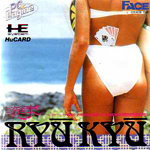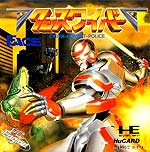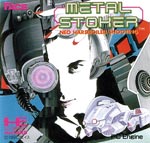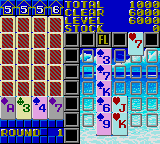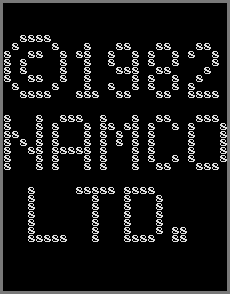Ok, so I guess this is me venting about my sob story of "success"
I put the success in quotations because to me it feels like failure.
What really sucks is that I bet there's a bunch of struggling indie devs out there who would love to have this level of exposure.
...and somehow writing this makes me feel so very conflicted.
I am angry, hurt, frustrated, enraged, proud and ashamed all at once.
I barely know what to say. I've held my tongue for years and tried to be a good sport, but I just can't anymore.
I just can't...
But before I start, I don't want anyone to try to "avenge me" or dole out their own retribution against anyone I mention here. These are just my hard feelings and regrets... and really, I only have myself to blame as I could have spoken up long ago before things got out of hand.
I almost don't know where to start, so I'll just start at the very beginning. Forgive me for misremembering the exact timelines or sequence these events played out, or any oversights on my part. No one is ever 100% right, myself possibly more so than the average.
If you reading this and happen to think that I might be referring to you in this rant, take everything I say with a grain of salt, I'm just venting. It's just my bruised ego talking, the ego of someone who has incredibly high standards, the type that are almost impossible to meet. Though, you might be able to learn something in all this if you can put your own ego aside.
I'll try and do the same for myself.
Anyway, Long before Sydney Hunter was conceived I made a stupid little game called Spunky's Super Car!.
This was way back in 2006 While I was working as an animator on GBA and DS games. I started playing around with graphics in my spare time that felt like they belonged on the Colecovision, a console I loved as a kid, and I ended up using those graphics to make a game with Multimedia Fusion (A game making software now known as Clickteam Fusion).
It was a silly little game where you played as a car in a series of crazy scenarios. I uploaded it to my website and put up a really crappy youtube video of it in action a few years later and then totally forgot about it.
Flash forward a few years to 2010. I found myself out of work and was spending some of my free time finishing up the unreleased 2nd issue of my goofy comic book "Dr. Pineapple: Intergalactic Privateer". During this time, I was contacted through the Atariage forums by a fellow who was in the business of publishing homebrew Colecovision games. Let's refer to him as "X". X somehow ran across Spunky's Supercar and was interested in publishing a Colecovision version of the game. I agreed, as I had nothing to lose other than some of my free time, which I had in spades at that point.
I reworked the graphics to fit the Colecovision's technical specs and re-did the comic book style intro from the original game had with an updated version.
I sent the assets over and forgot about it.
That year, I discovered that the software I used to make Supercar (and a couple of other dumb games) had just released a Flash export module. At that point, I took the gamble and attempted to live my dreams of being an indie game developer. After years of making mediocre licensed games for companies who cared far more about hitting publisher milestones than actually creating games that are good, I was bursting with ideas and enthusiasm - ready to prove myself to the world.
I started a one-man game dev studio known as Studio Piña and made flash games with the intent of getting sponsorships through Flash Game License. Many of which I just put up on my website for free or with some kind of ad on it to try and generate revenue (which they did not).
I later switched to iOS development and met with the same results... (It didn't help that I was late to the bandwagon for both platforms as they would both soon be saturated by cheap Chinese-made games that were all just quick reskins of one another.)
Anyway, the first game I developed at Studio Piña was a game called Sydney Hunter and the Caverns of Death. For this game, I made sure to adhere as closely as humanly possible to the technical specs of the colecovision/MSX hardware as I was (and still am) quite fond of the TMS9918A video chip and Z80 processor for some reason.
The game was inspired by games like H.E.R.O and Montezuma's Revenge, but with a darkness mechanic and a character who uses a boomerang as a weapon. I spent a ton of time on the game, building the levels, selecting the music, fixing bugs, etc. It took at least 4 months working 12-18 hour days 7 days a week and I thought it turned out really well for what it was intended to be, but due to a bug in the Flash exporter module for Multimedia Fusion, I held off releasing the game until 2011.
Anyway, some time later, I forget when exactly, I get an email from X, the same guy who wanted to make a Colecovision port of Supercar. It seems he had discovered Sydney Hunter and the Caverns of Death and was SUPER psyched about porting the game to the Colecovision.
I should have been wary, seeing as there was little to no progress on the Supercar game, but this guy.. god bless him, he has the infectious enthusiasm of a 5-year-old. This, I would realize later, might possibly be his only actual talent.
So I'm like "Whatever, there's only been a mild reception online to this or any of the other games I had made at that point anyway, so why not?"
And here's where things begin to go to shit.
It actually takes quite some time for things to really fall apart and for any animosity to appear, but this is where it began.
Some work had begun, and I updated the Sydney hunter assets a little, and made detailed maps, put together data on as many aspects of the gameplay as I could, and made an unlimited lives version of the game for easy reference... but no actual port seemed to be in progress.
A little while later, I see that X is announcing a Sydney Hunter game for the Intellivision. and the graphics look terrible.
I email him and I was like: "Dude, this is MY intellectual property, you didn't even ask!" and he was just like: "Oh, I had to reskin this Intellivision port of Smurf Rescue due to legal issues... you don't mind do you?"
...
Why?
Just why do I let people walk all over me like this?
I need to learn to stand up for myself.
Anyway, long story short: I fix the shitty graphics for X and never even end up getting a free copy of the game or anything.
This should have been a HUGE red flag.
Stupid good-hearted trusting nature of mine, Damn you!
From there, I foolishly agreed to work on a SNES port of Sydney Hunter.
I redid all the graphics, added new animations, created new bosses, new story/intro artwork...
And every single WIP build of the game they showed me just felt so shit.
I don't know how many times I tried to explain to the programmer (whom X had convinced to make this game for him) that Sydney's run cycle had 1 frame where he was completely off the ground, and if he didn't fix this, it would look wrong, but it was never fixed.
The new bosses in the game feel totally broken, and the frog "shoots" a chunk of his tongue at you. What the heck?
Not only that, but when Sydney dies, he flies all over the screen like crazy.
FUCK!
These lazy, incompetent assholes made a glitchy mess of a game...
And don't get me started on the glitchy boomerang physics.
...amateurs, they couldn't even manage to put in the awesome final boss I made for the game. (who was 100% doable on the SNES, mind you.)
What a joke.
It could have been awesome but ended up so very mediocre.
Around this time, X found a Youtuber with a marketing degree or something to help him shill the broken mess of a game.
You'd see this guy's videos all over the place showing broken WIP gameplay and saying how awesome it was.
They even convinced some other Youtubers to praise this and later games by giving them free copies.
Ugh.
So.. anyway, this story is leading somewhere.
I swear.
Somewhere in all of this, the port for Supercar FINALLY gets finished after maybe a year or 2.
The original game I made wasn't all that great, and the game this guy released was somehow worse.
INCOMPETENCE!
My version of Supercar heavily relied on music, but the Colecovision version has NONE! There was no space in the ROM for music because the programmer added a ROM wasting splash screen that was totally unnecessary and kind of broke the illusion that this was the actual "haunted" game mentioned in the comic intro from the game manual.
Very disappointing.
Anyway, at some point, X wants to make an NES Sydney Hunter game that is similar to Montezuma's Revenge.
At this point, I had already given up on being an indy dev, and this gave me something to do in my spare time to distract myself from feeling like a failure.
The project seemed simple, and I had hopes that maybe it would turn out decent.
So I agreed and worked on the sprites and backgrounds for the game.
I'm not sure exactly when it was decided to be a Mayan themed game, but I think it was somewhat early in development.
Somehow development stalled on the NES game and the project slowly evolved into a PC game that was to have the NES aesthetic.
During this time X decided to make his own separate Sydney hunter sequel using the same assets.
Of course, I only found out about this AFTER he publicly announced it.
You know, this was still MY IP. I felt disrespected but just kept on being a team player.
And to make it worse, the box art sucked donkey balls on every version of the game.
During the production of Curse of the Mayans, I felt that my input was constantly ignored. Whatever X wanted went into the game no matter what, and it didn't matter what I thought, because I was just the graphics guy... unless he wanted to copy-paste some stupid graphic he ripped from some other source and drop it into the game himself.
The programmer couldn't even keep the pixel aspect ratio consistent, big pixels next to small pixels constantly, WTF?!
On top of that, the programmer of the game would just add in whatever he wanted, just because he could.
It seemed that everyone could have creative control over the design of the game except me. Hell, even X's Youtuber pal had more influence on the design of the game than I did.
I was the ONLY one on the team with any actual game design experience or real-world games industry experience, and I was the designer of the original game. This was MY IP, but my opinion mattered for nothing.
The thing that still drives me up the wall is the whip.
Sydney hunter doesn't use a FUCKING whip! It's out of character. I don't know who's idea this was.
it was either X or his Youtuber friend. Possibly the Youtuber because he's a Castlevania fanboy, but also likely X because he's an NES fanboy and doesn't give a fuck about my opinion because "he's the bigshot publisher".
Listen, Sydney might be a little like Indiana Jones, but he is NOT Indiana Jones, he is an Aussie with a BOOMERANG! A boomerang is a totally different game mechanic. it gives you a long-distance attack but leaves you vulnerable for a few seconds once you throw it.
Any reasonable game designer would have made the boomerang the default weapon to create continuity between this and the first game and would have had the whip be an optional alternate weapon to be found and used later in the game.
I was never consulted on the whip. One day he's like "Oh yeah, Sydney uses a whip now. If you don't like how it looks, you can reanimate it for me."
Fuck you!
Fuck your stupid whip!
Fuck your dumb-shit out of place Zelda 2 references!
Fuck your attempts at turning this game into both Mega Man and Castlevania!
Stop ruining what I created!!!
Oh, how I wish I could have screamed that out at the top of my lungs over and over at them.
How I wish I could have killed my own beloved creation before this went any further... but it was too late.
Do you know how that feels?
To love something, and yet want to destroy it? It's like wanting to cut off your own fucking arm.
It tears you up inside!
The game was taking FOREVER to be finished. It seemed like every time I checked there was a new stupid, pointless feature or addition that was stretching the development out into infinity. I signed on for a simple NES game and it ended up wasting my time for over 4 years before I finally had enough and told X that I was done with this shit. Sydney Hunter was dead to me.
My experience with X was a long, drawn-out exercise in frustration, incompetence, and all the worst aspects of fanboy-ism.
No one ever responded to my criticism, which was as constructive as I could have possibly made it.
No one respected my Intellectual property.
No one gave a shit about what I thought.
X took Sydney and did whatever he wanted with him with no concern for anyone else but his own enthusiasm to make games that tickled his retro nostalgia fancy.
And I was too afraid to piss everyone off by telling them just how much I hated virtually every aspect of Curse of the Mayans.
This was not the Sydney Hunter I created, or at least not the one I wanted to create. This was a sloppy mess.
I had some ideas for a true sequel of my own - One where Sydney finds himself in mysterious underground caverns once again, this time trying to rescue his lost puppy. There would have been elemental gems that he could attach to his boomerang to attain special abilities and the gameplay would have had a strong emphasis on a fire/ice mechanic.
But you know why I never made it?
Because I didn't want to waste massive amounts of time and energy on a game that would probably have had very little return on investment.
Curse of the Mayans ended up being 2 to 3 times as much time and energy as my sequel would have been, and there was even less return on investment for me.
I was so tired of this mess that I sold the character of Sydney Hunter to X so I wouldn't have to carry the burden anymore.
They made frustratingly broken ports and remixes of a game that I think is only OK at best.
The Colecovison version of Caverns of Death is the only one that looks like any care was put into it... until you realize that the darkness mechanic is missing entirely.
There were just so many issues I had working with X and his team.
Every project just seemed to balloon out of control and linger in some kind of unending development hell. Don't believe me? Check out Justice Beaver for the SNES. That too started as a small project, and has been in production now for OVER 6 YEARS!
I provided X with all kinds of graphics and detailed game design documents for a variety of other projects as well which he would just chop to bits and repurpose for his own needs or desires.
X will just take any IP he sees as "up for grabs" and announce project after project and rarely produce anything. He has no concept of graphical limitations and will add extra colors to a console's video chip if he thinks he needs more. THAT'S NOT HOW IT WORKS!
Hell, I've even seen him rip graphics out of first-party Nintendo games to use in his projects, and once floated out the idea of releasing an unlicensed port of one of Konami's IPs!
After I sold X the rights to Sydney Hunter, I started seeing really shitty character art for Sydney being used in adverts.
I am by no means a great artist, but the art they were now making for Sydney looked (and still looks) like shit to me. Some of it isn't actually all that bad, but Sydney is always totally off-model.
The intro animation in the final version of COTM is the mockup .gif I made for the NES version of the game. It was not supposed to have been so choppy, but they were lazy and just said "Fuck it, I don't want to recreate this simple animation in the game engine, I'll just drag and drop the .gif file into the game and call it a day".
I loved the Sydney hunter that I created, the simple Australian geologist who accidentally gets himself trapped in a haunted lava cavern... but I loathe the shitty generic Indiana Jones wannabe that he became.
Sydney was at both the explosive birth and the lingering death of my indy game dev studio.
I feel like I lost part of myself in all this, a good part, a well-meaning innocent part.
I will never truly be the same because of this experience.
And every time there is a Steam sale, Nintendo Switch physical version, or a HIDEOUS new iiRcade cabinet gets released with Sydney's name and second-rate artwork plastered all over it, I will feel like my creation's mutilated corpse is being dragged through the streets once again.
Yeah, maybe I'm a bit egotistic about my creations, but when someone takes something you made, makes it worse, and then proceeds to make their living off of it, it hurts.
I don't hold a lot of animosity towards X and associates. They are decent people in general, but they are amateurs pretending to be professionals.
Always work with and learn from people who are more skilled than you are, not less.
Thank you.




.png)

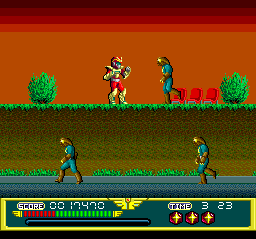


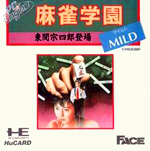

-007.gif)
